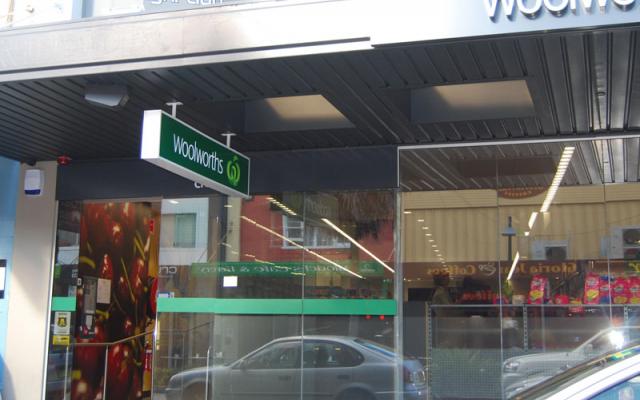Changing Bland to Fantastic: Tips of Impactful Store Overhaul
In the fast-paced world of commerce, staying important and appealing to customers is paramount. As consumer demands change and rivalry increases, many store operators find that their once-thriving establishments have fallen into a drab condition. This is where retail refurbishment becomes significant. It provides a revolutionary prospect to inject new life into your business, boosting not only the appearance of your space but also the entire shopping experience. By investing in a strategic update, shops can create an environment that draws new customers while retaining devoted ones returning.
Store renovation is not simply a layer of paint or floor replacement; it’s a strategic effort that can refresh your brand and enhance sales. By comprehending what retail refurbishment entails and identifying the signs that it’s time for an enhancement, store owners can efficiently navigate toward greater client happiness and boosted profitability. From design enhancements and good lighting decisions to sustainable materials and layout improvements, the world of retail refurbishment is teeming with possibilities waiting to be uncovered. Embrace find out from lackluster to fabulous and uncover how you can elevate your shopping area.
Comprehending Commercial Refurbishment
Commercial refurbishment is the act of updating a retail space to improve its general appearance, usability, and client satisfaction. This process can involve a wide range of updates, from structural changes to visual enhancements such as paint, floor coverings, lighting, and showcase fixtures. The aim is to create an welcoming atmosphere that not only attracts fresh customers but also keeps existing ones by offering a fresh and engaging shopping atmosphere.
One of the primary motivations for initiating a commercial renovation is to revitalize a business and increase sales. Over time, even the top-performing stores can become dull or obsolete, leading to a decline in client engagement. A carefully planned refurbishment can revitalize a shop by aligning it with modern aesthetic styles, improving item visibility, and making the store more approachable. This not only helps in attracting new clientele but also improves the overall shopping journey for regular customers.
Retail renovation also plays a important role in reinforcing brand identity. A carefully restructured store can communicate brand values, target to specific audiences, and establish an immersive shopping environment. When customers feel a bond to a store's aesthetics and configuration, they are more likely to interact with the business and make buying decisions. Thus, understanding the multifaceted nature of commercial renovation is crucial for businesses looking to thrive in the challenging market and prosper in a changing marketplace.
Arranging Your Retail Revamp

Effective retail refurbishment begins with detailed preparation that considers your store's unique characteristics and customer preferences. Commence by evaluating the present state of your store and noticing areas that require improvement. Performing customer surveys and collecting feedback can provide essential insights into what your patrons desire to experience. This will aid you establish clear objectives for your refurbishment, be it enhancing the shopping experience, updating your aesthetic, or enhancing operational efficiency.
Subsequently, define your budget and timeline for the initiative. Setting a practical budget involves taking into account all costs, including materials, labor, and unexpected expenses. It’s essential to distribute funds carefully to ensure that you can achieve your vision without financial strain. Creating a comprehensive timeline will aid control expectations and minimize disruptions during the refurbishment process. By planning work during non-peak hours or using temporary displays, you can preserve some level of operations while renovations are underway.
Finally, collaborate with experienced designers and contractors who focus in retail spaces. Hiring professionals can offer fresh ideas and expertise, guaranteeing that your refurbishment aligns with current trends and your brand identity. Don’t forget to include elements that enhance the customer experience, such as creative layouts or interactive branding features. A unified team effort will be key in implementing your plan effectively and establishing a retail environment that draws in and holds customers.
Elevating Consumer Engagement With Aesthetic
An efficient retail revamp focuses on establishing an inviting and interactive environment that enhances the client experience. By carefully planning the store configuration, businesses can improve the flow of foot traffic, making it simpler for clients to move through and discover products. A well-designed space motivates shoppers to remain longer, boosting the likelihood of finalizing a purchase. Key components such as thoughtfully positioned displays, open corridors, and participatory areas are vital in encouraging beneficial customer interactions.
The use of hues and lights is another essential aspect of visual aesthetics that significantly influences the shopping experience. A strategically chosen palette can evoke distinct reactions and connect with the brand essence, while effective illumination can highlight products and create an warm atmosphere. Natural illumination, warm tones, and adjustable lighting choices help create a friendly environment, making customers feel comfortable and prompting them to return. When customers feel content in a space, they are more apt to spend time looking around and ultimately completing purchases.
Finally, adding features of sustainability into the concept not only attract environmentally conscious shoppers but also enhances the overall shopping process. Utilizing green materials and sustainable lighting can strengthen a brand's dedication to sustainability, establishing a favorable impression on clients. By creating a store that prioritizes both aesthetics and efficiency while being considerate of its eco-footprint, retailers can develop a more meaningful connection with their customers, ultimately driving loyalty and increasing sales.